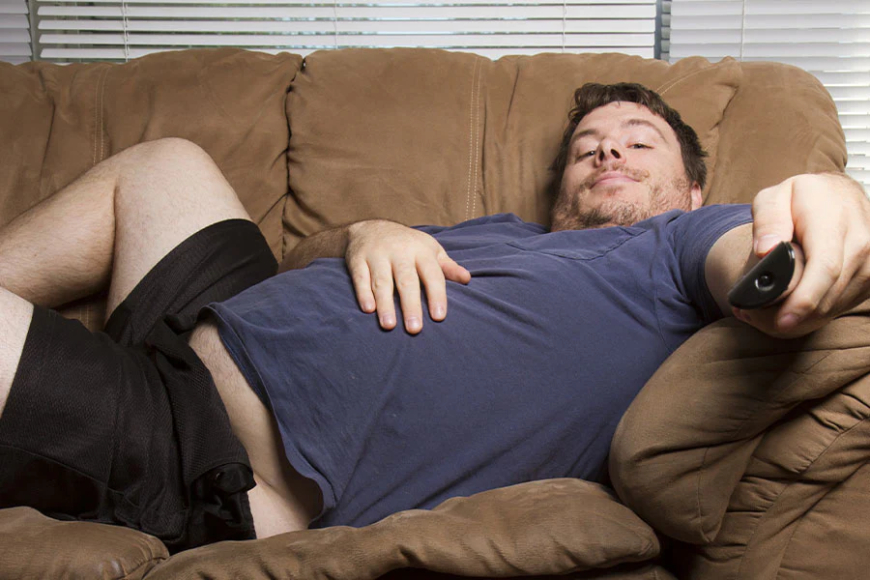Breaking Free from a Sedentary Lifestyle: Small Changes That Create Big Impact
Discover simple ways to break free from a sedentary lifestyle. Learn how small daily changes can improve energy, posture, and overall health.

Introduction
The modern lifestyle is dominated by screens, desk jobs, and long hours of sitting. While technology has made life more convenient, it has also led to an increase in sedentary behavior, which is linked to numerous health risks, including obesity, heart disease, diabetes, and even mental health disorders.
However, breaking free from a sedentary lifestyle doesn’t mean you have to spend hours at the gym. Small, intentional changes in daily habits can significantly improve your overall well-being. In this article, we’ll explore simple, actionable steps to help you move more, stay active, and feel energized throughout the day.
The Dangers of a Sedentary Lifestyle
A sedentary lifestyle refers to prolonged periods of inactivity, usually involving sitting or lying down with little movement. Studies show that excessive sitting can:
- Increase the risk of cardiovascular disease
- Slow down metabolism, leading to weight gain
- Reduce muscle strength and mobility
- Contribute to anxiety and depression
- Increase the likelihood of developing Type 2 diabetes
According to a study published in the American Journal of Preventive Medicine, prolonged sitting increases the risk of early death by up to 49%. Fortunately, small but consistent lifestyle changes can counteract these effects.
1. Make Movement a Habit
You don’t have to overhaul your life to be more active—small steps add up over time.
Simple Ways to Incorporate Movement Daily:
- Use the 30-Minute Rule: Set a timer to stand up and stretch every 30 minutes. Even a short walk around your home or office can help improve circulation.
- Take the Stairs: Instead of the elevator, opt for the stairs. It strengthens your legs and boosts your heart rate.
- Walk While You Talk: Whether you're on a phone call or brainstorming ideas, walk around instead of sitting still.
- Turn Chores into Workouts: Cleaning, gardening, or even cooking can be an opportunity to move more.
? Did You Know? Walking just 5 minutes every hour can counteract the harmful effects of prolonged sitting.
2. Create an Active Work Environment
Many people spend 8+ hours a day sitting at a desk. Here’s how you can stay active even while working:
Tips for a More Active Workday:
- Use a Standing Desk: Alternating between sitting and standing improves posture and reduces back pain.
- Try a Desk Cycle or Under-Desk Treadmill: These tools allow light movement while you work.
- Schedule Walking Meetings: Instead of sitting in a conference room, take your meetings outdoors.
- Stretch at Your Desk: Simple stretches like shoulder rolls, neck rotations, and seated leg raises can prevent stiffness.
For more workplace wellness strategies, check out Harvard Business Review’s guide on workplace ergonomics.
3. Prioritize Short, Frequent Exercise Sessions
You don’t need an hour-long workout to stay active. Short bursts of activity throughout the day can be just as effective.
Time-Efficient Exercise Ideas:
- 10-Minute Walks: A brisk walk after meals improves digestion and burns calories.
- 5-Minute Stretching Routines: Loosens stiff muscles and improves flexibility.
- High-Intensity Interval Training (HIIT): Just 15 minutes of HIIT can provide the same benefits as a longer workout.
- Bodyweight Exercises: Squats, lunges, and push-ups can be done anywhere.
Check out Mayo Clinic’s expert recommendations on short workouts.
4. Reduce Screen Time and Engage in Active Leisure
Most people spend hours on screens after work—whether watching TV, scrolling social media, or playing video games. While entertainment is important, excessive screen time can worsen inactivity.
Healthier Alternatives to Reduce Screen Time:
- Opt for Active Hobbies: Dancing, hiking, or even playing a sport keeps you engaged and moving.
- Use a Fitness Tracker: Setting step goals can encourage more movement.
- Try a Standing TV Setup: Place your treadmill or exercise bike in front of the TV to stay active while watching.
- Stretch or Foam Roll During Screen Time: This helps relax tight muscles while enjoying your favorite shows.
5. Improve Your Posture and Mobility
Long hours of sitting can cause poor posture, leading to back pain, neck stiffness, and decreased mobility. Here’s how to improve it:
Posture Tips for an Active Lifestyle:
- Sit with Proper Alignment: Keep your back straight, shoulders relaxed, and feet flat on the ground.
- Use a Lumbar Support Cushion: Helps maintain spinal alignment.
- Perform Mobility Exercises: Yoga and stretching help undo the damage of prolonged sitting.
- Strengthen Your Core: A strong core supports good posture and reduces lower back pain.
For expert mobility tips, check out Cleveland Clinic’s guide to better posture.
6. Get Outdoors and Make Movement Enjoyable
Nature is a powerful motivator for staying active. Studies show that outdoor exercise reduces stress, boosts energy, and enhances mental clarity.
Easy Outdoor Activities:
- Morning Walks: Start your day with fresh air and movement.
- Cycling: A great low-impact workout that strengthens muscles.
- Hiking: Engages multiple muscle groups while enjoying nature.
- Outdoor Yoga or Tai Chi: Helps with flexibility and mental relaxation.
Try exploring local parks or green spaces to make movement more enjoyable.
7. Improve Sleep and Recovery
Being sedentary can negatively impact sleep quality, leading to fatigue and reduced motivation to move. Here’s how to optimize rest:
- Stick to a Consistent Sleep Schedule: Helps regulate energy levels.
- Avoid Screens Before Bed: Blue light disrupts melatonin production.
- Incorporate Evening Stretches: Relax your body and prevent stiffness.
- Create a Comfortable Sleep Environment: A cool, dark, and quiet room promotes deeper sleep.
For more sleep optimization tips, visit National Sleep Foundation’s resources.
Conclusion: Small Changes, Big Impact
Breaking free from a sedentary lifestyle doesn’t require drastic changes—it’s about consistent small actions that add up over time. Whether it’s taking short walks, standing more, or engaging in active hobbies, every bit of movement contributes to better health.
Start today by making one small change, and over time, these habits will transform your energy levels, focus, and overall well-being.
For more expert wellness tips, visit WellnessWire and stay updated with the latest health trends.
What's Your Reaction?
 Like
0
Like
0
 Dislike
0
Dislike
0
 Love
0
Love
0
 Funny
0
Funny
0
 Angry
0
Angry
0
 Sad
0
Sad
0
 Wow
0
Wow
0



















































